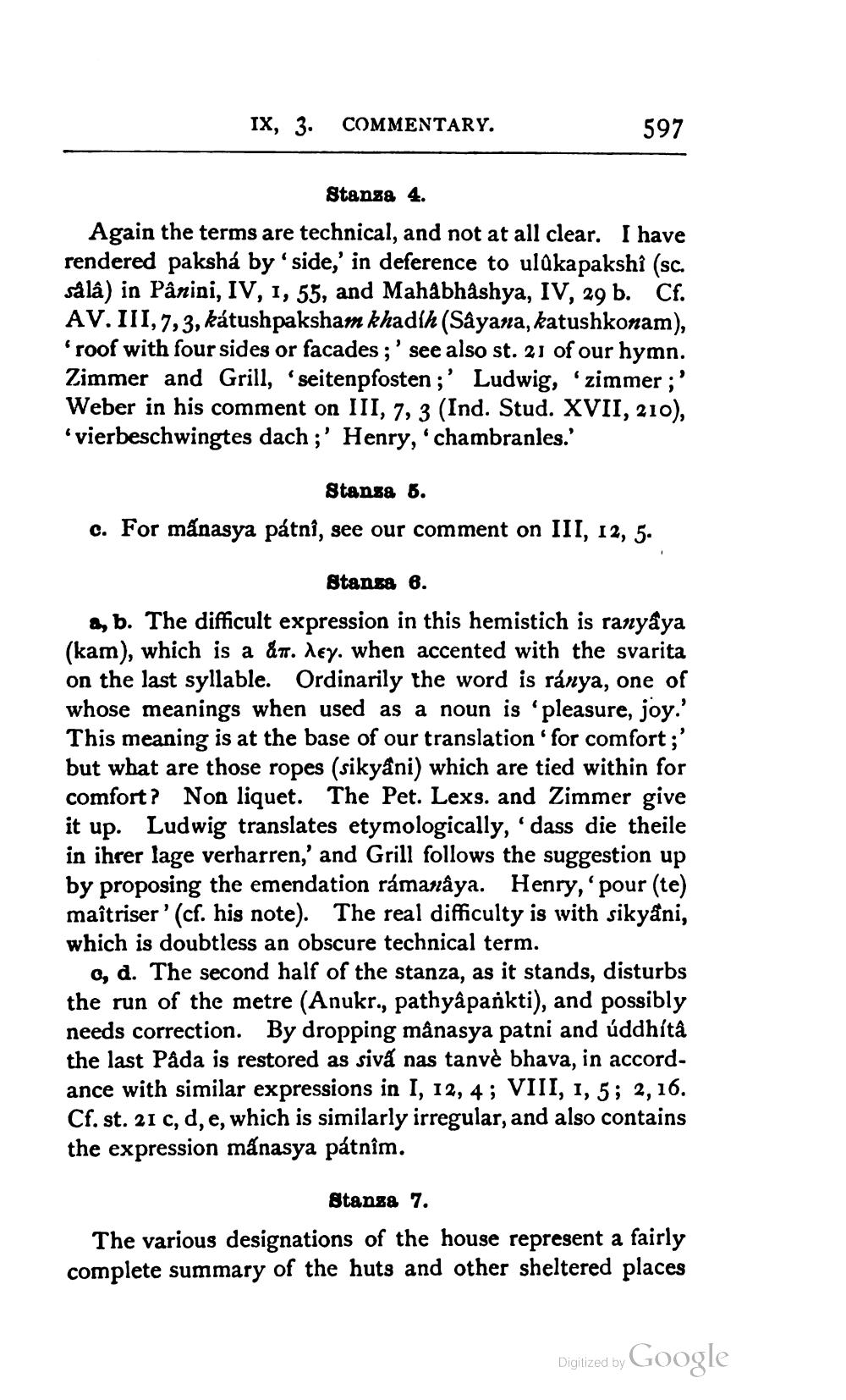________________
IX, 3. COMMENTARY.
597
Stanza 4. Again the terms are technical, and not at all clear. I have rendered paksha by side,' in deference to ulakapakshi (sc. sålâ) in Pânini, IV, 1, 55, and Mahabhåshya, IV, 29 b. Cf. AV. III, 7,3, kátushpaksham khadih (Sâyana, katushkonam), 'roof with four sides or facades ; ' see also st. 21 of our hymn. Zimmer and Grill, seitenpfosten ;' Ludwig, "zimmer ;' Weber in his comment on III, 7, 3 (Ind. Stud. XVII, 210), 'vierbeschwingtes dach;' Henry, chambranles.'
Stansa 8. c. For manasya pátni, see our comment on III, 12, 5.
Stanza 6. 2, b. The difficult expression in this hemistich is ranyâya (kam), which is a dr. dey. when accented with the svarita on the last syllable. Ordinarily the word is ránya, one of whose meanings when used as a noun is 'pleasure, joy.' This meaning is at the base of our translation for comfort;' but what are those ropes (sikyäni) which are tied within for comfort? Non liquet. The Pet. Lexs. and Zimmer give it up. Ludwig translates etymologically, 'dass die theile in ihrer lage verharren,' and Grill follows the suggestion up by proposing the emendation rámanâya. Henry, pour (te) maîtriser' (cf. his note). The real difficulty is with sikyäni, which is doubtless an obscure technical term.
0, d. The second half of the stanza, as it stands, disturbs the run of the metre (Anukr., pathyâpankti), and possibly needs correction. By dropping mânasya patni and úddhítå the last Påda is restored as sivá nas tanvè bhava, in accordance with similar expressions in I, 12, 4; VIII, 1, 5; 2,16. Cf. st. 21 c, d, e, which is similarly irregular, and also contains the expression mấnasya pátnim.
Stansa 7. The various designations of the house represent a fairly complete summary of the huts and other sheltered places
Digitized by Google




